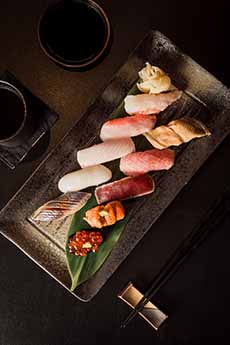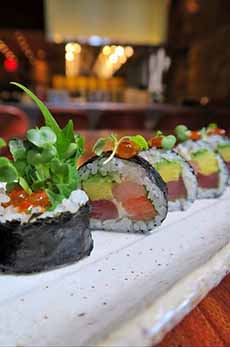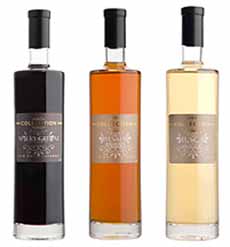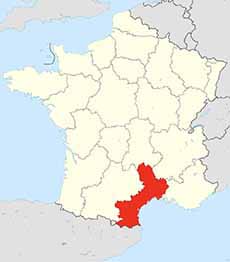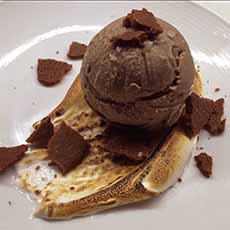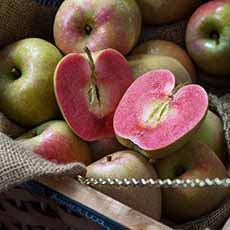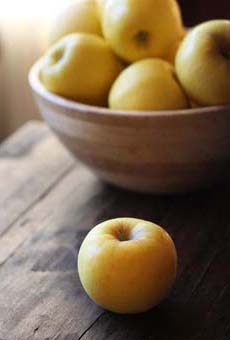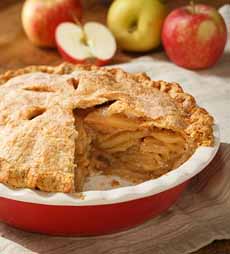|
When was the last time you ate something new?
Most of us pursue a familiar grocery list, week in and week out.
But a trip to the farmers’ market always yields new discoveries. It may be an apple; but it’s an apple you’ve never seen before, like the Pink Pearl apples in the photo.
So go browsing this weekend. Ask the booth clerk about heirloom varieties, or simply try a fruit or vegetable you rarely eat. Loganberries? Turnips?
Here’s what’s in season in summer, although you’ll find other fruits and vegetables not on this list.
While you’re at the market, pick up an artisan bread for sandwiches.
THE HISTORY OF APPLES
Apples, which may seem to some to be an all-American fruit, originated in Central Asia: in southern Kazakhstan, Kyrgyzstan, Tajikistan, and Xinjiang, China.
Its wild ancestor, Malus sieversii, can still be found growing wild today—although the fruit of the tree won’t appeal to humans.
Apples have been grown for thousands of years in Asia and were brought to other regions by botanists, colonists, and traders.
As a result, apple trees (Malus domestica) are cultivated worldwide. Sweet fruit varieties are grown for eating, and sour varieties are grown for cider or other alcoholic beverages.
The center of diversity (breeding) of the genus Malus is in eastern present-day Turkey. The apple tree may have been the earliest tree that humans cultivated [source].
There are more than 7,500 known cultivars of apples, bred for specific characteristics. Even among sweet apples, different cultivars are bred for hand fruit and cooked fruit (applesauce, pies), with many varieties in each.
Apples Come To America
Apples were introduced to North America by colonists in the 17th century. The first apple orchard on the continent was planted in Boston in 1625 by Reverend William Blaxton in 1625. (The only apples native to North America are crab apples.)
The colonists primarily used the apples for cider, which was preferred to water with its potentially harmful microorganisms.
Cider was also easier to make than beer.
Cider apples are different from varieties meant to be eaten rather than turned into a drink. John Chapman, a.k.a. Johnny Appleseed, spread cider apples across the country, not apples for pie.
But by the 1800s, American farmers were growing a staggering 14,000 varieties of apple, many of which had been bred domestically. Apples also cross-pollinate, creating new breeds themselves [source].
So, assuming you’re not making cider, which apple would you rather have a Delicious, a Fuji, a Gala, a Granny Smith, a Honeycrisp, or the scores of other varieties within your reach?
Perhaps your farmers market scouting will yield some heirloom varieties, such as Black Oxford, Cameo, Gravenstein, and Newtown Pippin, a yellow apple with olive green and red spots, that was grown by Thomas Jefferson at Monticello for cooking.
Every region grows different varieties, so whenever you’re visiting a different area, ask for the nearest farmers market.
It’s a fun—and potentially delicious—voyage of discovery.
FOOD TRIVIA: Is it really as American as apple pie?
America has no claims to the origin of apple pie. the first recorded recipe for apple pie was written in 1381 in England and called for figs, raisins, pears, and saffron in addition to apples.
Dutch recipes for apple pies appear as far back as 1514.
Those early apple pie recipes generally didn’t include sugar, and their pastry crust was “coffin” pastry—a stiff, inedible dough that was used because baking pans were not common*.
Meats and other foods were also baked in coffins. By the time society developed inn America, metal cookware was available.
So why is it “as American as apple pie?” Because Americans loved apple pie. It’s that simple.
Today, the expression might be, “as American as a cheeseburger and fries.
Check out the history of pie and the history of pastry.
_______________
*By the 17th century, it was common for a Western kitchen to contain a number of skillets, baking pans, a kettle, and several pots, along with a variety of pot hooks and trivets. Brass or copper vessels were common in Europe and Asia; iron pots were common in the American colonies. Improvements in metallurgy during the 19th and 20th centuries engendered pots and pans from metals such as steel, stainless steel, and aluminum to be economically produced.
|
